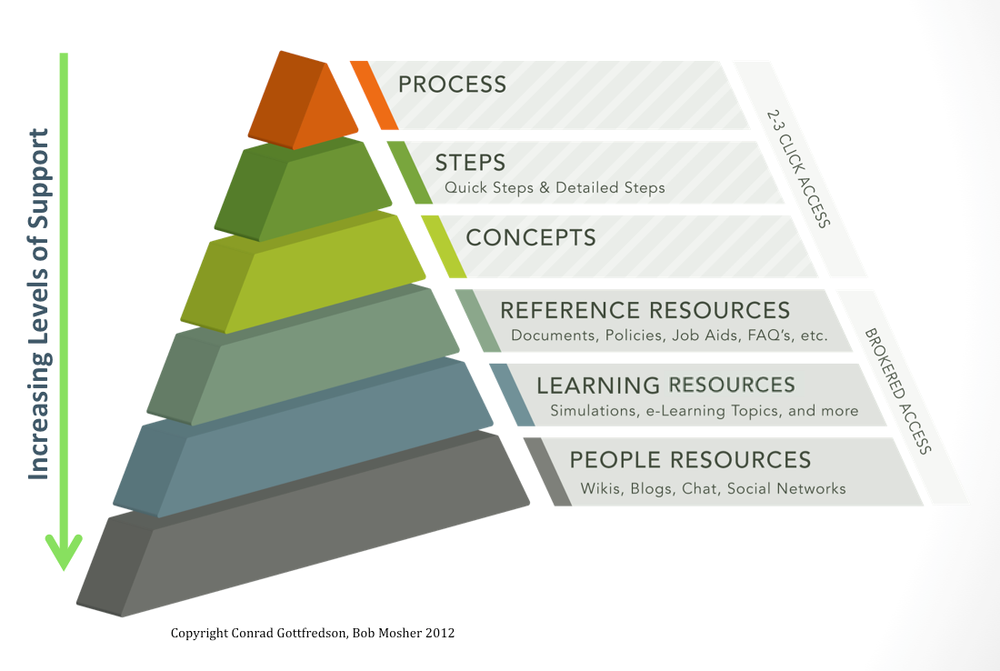Let me read you your rights: Performance support is about providing the right information, the right amount of information and at the right time. It’s not a new concept; it is a relatively new and trend worthy approach to designing learning experiences. Performance support, or just in time learning, supports the 70:20:10 model (more about this model in a later blog post). This idea, researched at the Center for Creative Leadership, proposes that 70% of your learning happens on the job.
Think back over your career. Have you ever had to stop what you were doing to find an answer to a question, so that you could move forward with a task? Think about how it feels when you are in the zone and then it’s disrupted. Is it easy or hard to get back into your workflow? Have you ever attended a systems training course and subsequently forgot everything you learned because you didn’t use it right away?
 An appropriately designed performance support strategy can help to increase productivity and reduce time off the job spent looking for answers. It should be seamless and obvious. You don’t stop and think about it. It could be a printed quick reference sheet, a help system embedded in a software program, an online product comparison, online sales tips, to name but a few.
An appropriately designed performance support strategy can help to increase productivity and reduce time off the job spent looking for answers. It should be seamless and obvious. You don’t stop and think about it. It could be a printed quick reference sheet, a help system embedded in a software program, an online product comparison, online sales tips, to name but a few.
As to be expected, there's a wealth of information about performance support on the web. We looked at existing credible sources and found what we think are some of the best 2013 articles that provide hands on tips and information to help design and implement the best possible performance support strategy for your organization. We've included the first of our five top articles of 2013 on performance support below. Stay tuned for upcoming blog posts on the remaining top four performance support articles of 2013.
The Round-Up: #1
16 Performance Support Tips, Strategies, and Tactics By: Jennifer Neibert, March 27, 2013
Learning Solutions Magazine published some of the best articles on performance support in 2013. This is a compiled list of tips and tricks from the presenters at the eLearning Guild’s Online Forum, “Learning at the Moment of Need: Connecting Learning to Performance," on April 11th and 12th, 2013.
It gives you a good sense of what performance support is all about and some expert bite-sized advice on how to approach your design strategy. The article questions the traditional approach to training and eLearning in today’s world where employees are expected to do more, with less time and less resources. Some of the advice includes focusing on the point of need, ensuring information is as easy to access as possible, making content short and concise and design for performance first, knowledge second.
If you attended the online forum in April, We'd love to hear what you liked, learned and remembered.
 and implementing a performance support infrastructure gives these dynamic learners instant access to what they need in order to perform competently. The main focus of the article is on integrating the infrastructure according to the workflow process in question and designing according to two principles, proximity and immediacy. Performance support is efficient when it is accessed within 2 clicks and 10 seconds.
and implementing a performance support infrastructure gives these dynamic learners instant access to what they need in order to perform competently. The main focus of the article is on integrating the infrastructure according to the workflow process in question and designing according to two principles, proximity and immediacy. Performance support is efficient when it is accessed within 2 clicks and 10 seconds.







